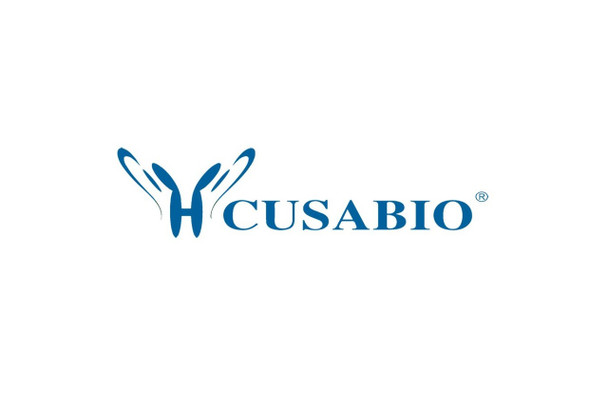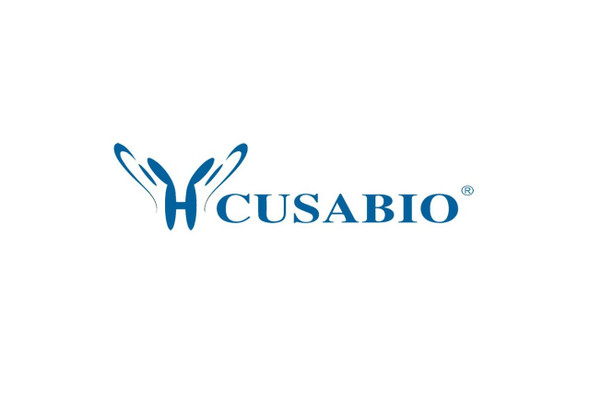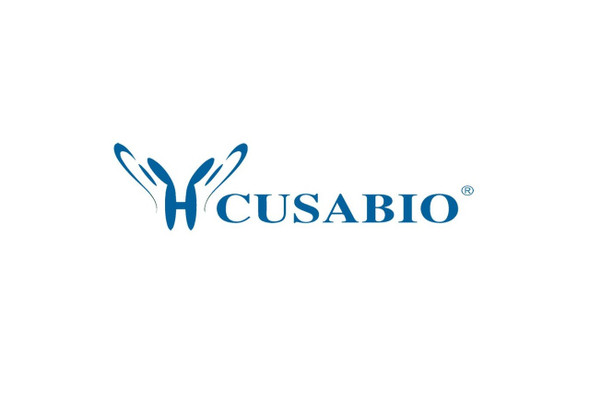Cusabio Human Recombinants
Recombinant Human Ras-related protein Rab-8A (RAB8A), partial | CSB-EP019222HU1
- SKU:
- CSB-EP019222HU1
- Availability:
- 13 - 23 Working Days
Description
Recombinant Human Ras-related protein Rab-8A (RAB8A), partial | CSB-EP019222HU1 | Cusabio
Alternative Name(s): Oncogene c-mel
Gene Names: RAB8A
Research Areas: Signal Transduction
Organism: Homo sapiens (Human)
AA Sequence: KTYDYLFKLLLIGDSGVGKTCVLFRFSEDAFNSTFISTIGIDFKIRTIELDGKRIKLQIWDTAGQERFRTITTAYYRGAMGIMLVYDITNEKSFDNIRNWIRNIEEHASADVEKMILGNKCDVNDKRQVSKERGEKLALDYGIKFMETSAKANINVENAFFTLARDIKAKMDKKLEGNSPQGSNQGVKITP
Source: E.coli
Tag Info: N-terminal 6xHis-SUMO-tagged
Expression Region: 3-193aa
Sequence Info: Partial
MW: 37.8 kDa
Purity: Greater than 90% as determined by SDS-PAGE.
Relevance: The small GTPases Rab are key regulators of intracellular membrane trafficking, from the formation of transport vesicles to their fusion with membranes. Rabs cycle between an inactive GDP-bound form and an active GTP-bound form that is able to recruit to membranes different sets of downstream effectors directly responsible for vesicle formation, movement, tethering and fusion. That Rab is involved in polarized vesicular trafficking and neurotransmitter release. Together with RAB11A, RAB3IP, the exocyst complex, PARD3, PRKCI, ANXA2, CDC42 and DNMBP promotes transcytosis of PODXL to the apical membrane initiation sites (AMIS), apical surface formation and lumenogenesis. Together with MYO5B and RAB11A participates in epithelial cell polarization. Plays an important role in ciliogenesis. Together with MICALL2, may also regulate adherens junction assembly. May play a role in insulin-induced transport to the plasma membrane of the glucose transporter GLUT4 and therefore play a role in glucose homeostasis.
Reference: "The MEL gene: a new member of the RAB/YPT class of RAS-related genes."Nimmo E.R., Sanders P.G., Padua R.A., Hughes D., Williamson R., Johnson K.J.Oncogene 6:1347-1351(1991)
Storage: The shelf life is related to many factors, storage state, buffer ingredients, storage temperature and the stability of the protein itself. Generally, the shelf life of liquid form is 6 months at -20?/-80?. The shelf life of lyophilized form is 12 months at -20?/-80?.
Notes: Repeated freezing and thawing is not recommended. Store working aliquots at 4? for up to one week.
Function: The small GTPases Rab are key regulators of intracellular membrane trafficking, from the formation of transport vesicles to their fusion with membranes. Rabs cycle between an inactive GDP-bound form and an active GTP-bound form that is able to recruit to membranes different sets of downstream effectors directly responsible for vesicle formation, movement, tethering and fusion. That Rab is involved in polarized vesicular trafficking and neurotransmitter release. Together with RAB11A, RAB3IP, the exocyst complex, PARD3, PRKCI, ANXA2, CDC42 and DNMBP promotes transcytosis of PODXL to the apical membrane initiation sites (AMIS), apical surface formation and lumenogenesis
Involvement in disease:
Subcellular Location: Cell membrane, Lipid-anchor, Cytoplasmic side, Golgi apparatus, Recycling endosome membrane, Cell projection, cilium, Cytoplasmic vesicle, phagosome, Cytoplasmic vesicle, phagosome membrane, Lipid-anchor, Cytoplasmic side, Cytoplasm, cytoskeleton, microtubule organizing center, centrosome, centriole, Cytoplasm, cytoskeleton, cilium basal body
Protein Families: Small GTPase superfamily, Rab family
Tissue Specificity:
Paythway: AMPKSignaling
Form: Liquid or Lyophilized powder
Buffer: If the delivery form is liquid, the default storage buffer is Tris/PBS-based buffer, 5%-50% glycerol. If the delivery form is lyophilized powder, the buffer before lyophilization is Tris/PBS-based buffer, 6% Trehalose, pH 8.0.
Reconstitution: We recommend that this vial be briefly centrifuged prior to opening to bring the contents to the bottom. Please reconstitute protein in deionized sterile water to a concentration of 0.1-1.0 mg/mL.We recommend to add 5-50% of glycerol (final concentration) and aliquot for long-term storage at -20?/-80?. Our default final concentration of glycerol is 50%. Customers could use it as reference.
Uniprot ID: P61006
HGNC Database Link: HGNC
UniGene Database Link: UniGene
KEGG Database Link: KEGG
STRING Database Link: STRING
OMIM Database Link: OMIM






